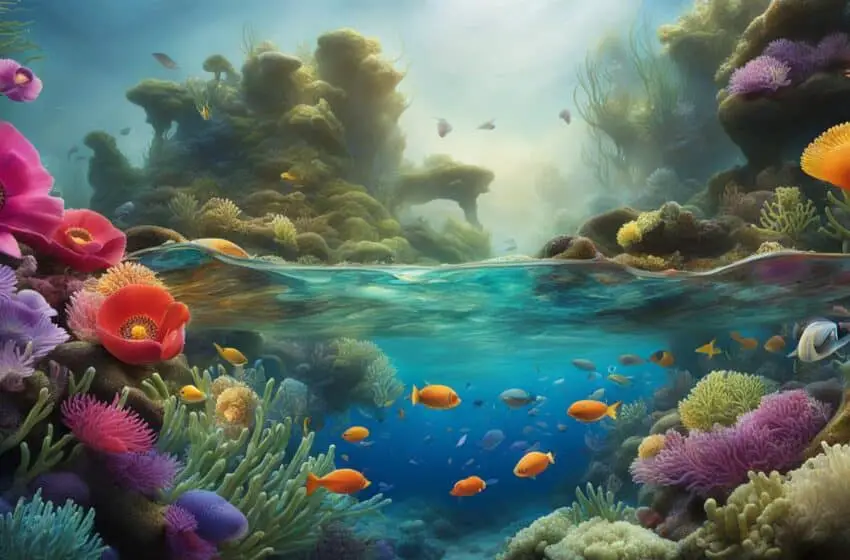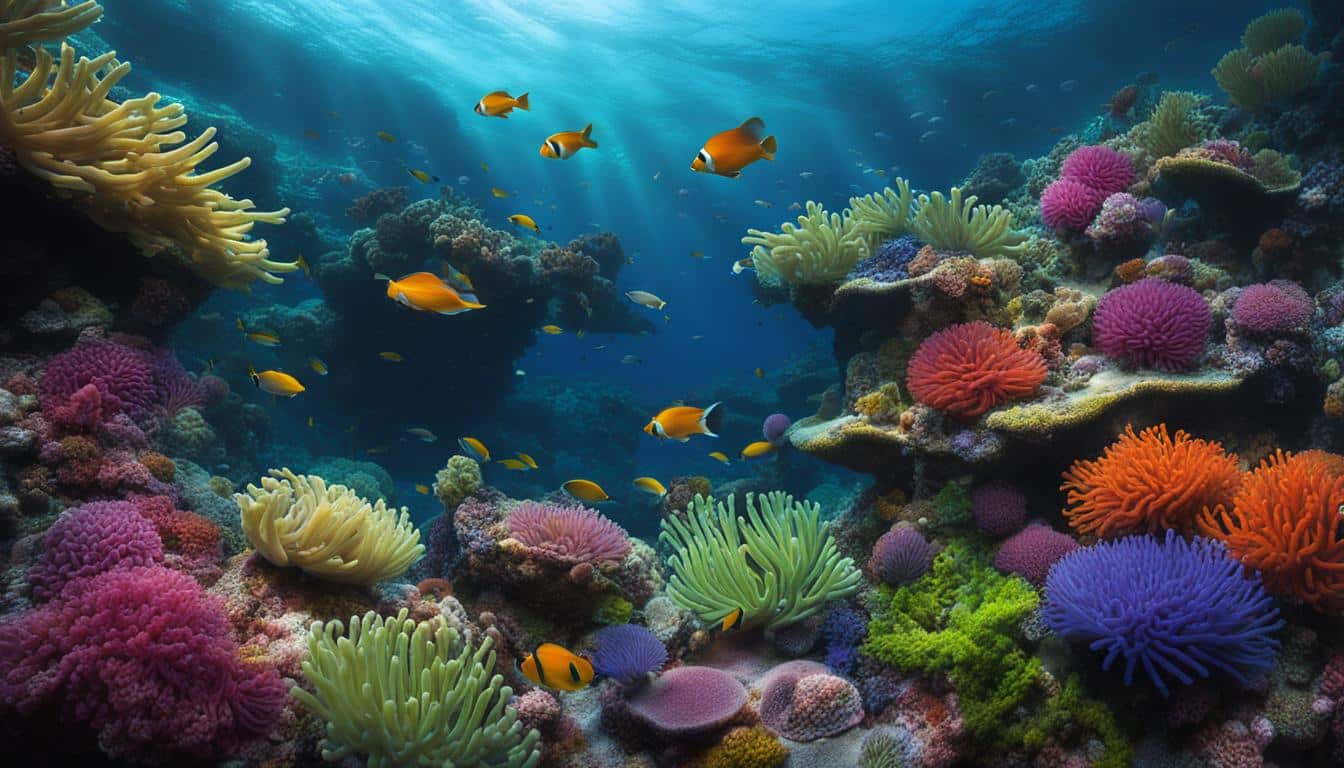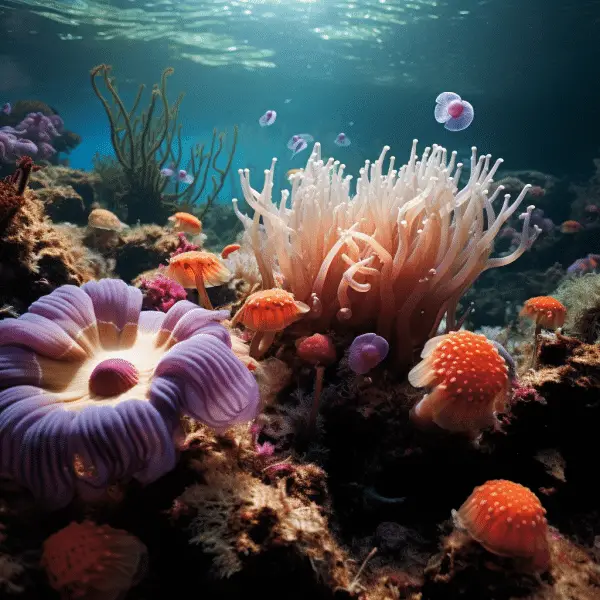Protecting Anemone Habitat Conservation: The Importance of Anemones in Marine Ecosystems

As anemone habitats continue to face threats, it becomes crucial to focus on anemone habitat conservation, preserving these delicate ecosystems and ensuring their long-term survival. Anemone habitats are not only home to a diverse range of marine creatures but also play a vital role in maintaining the health and biodiversity of our oceans. Efforts made by organizations like Oceana and the Pacific Fishery Management Council are aimed at safeguarding these habitats and the unique species that depend on them.
One of the significant threats to anemone habitats is bottom trawling, an industrial fishing method that can harm marine life indiscriminately. This destructive practice poses a substantial risk to the sensitive anemone populations. To counter this threat, conservation areas are being established, and sustainable management practices are being promoted. By protecting anemone habitats, we can preserve biodiversity and contribute to the overall health of our oceans.
Key Takeaways:
- Anemone habitats are vital for maintaining the health and diversity of our ocean ecosystems.
- Efforts by organizations like Oceana and the Pacific Fishery Management Council are crucial for the conservation of anemone ecosystems.
- Bottom trawling poses a significant threat to anemone habitats and their populations.
- Conservation areas and sustainable management practices are being implemented to protect anemones and preserve biodiversity.
- Individuals can support anemone habitat conservation by participating in public comment periods and supporting organizations working towards ocean conservation.
The Importance of Anemone Habitat Conservation
Anemone habitat conservation is crucial for the preservation of not only anemone species but also the entire marine ecosystem. Anemones provide vital shelter and protection from strong currents and predators, creating crucial areas for feeding, spawning, resting, and breeding for various fish species. These habitats also play a significant role in supporting the health and resilience of coral reef communities.
Efforts to conserve anemone habitats are essential for promoting the diversity and stability of marine ecosystems. This includes the restoration of damaged or degraded habitats, as well as the protection of existing ones from destructive activities such as bottom trawling. Sustainable habitat management practices, such as reducing carbon emissions and addressing climate change, are also key in ensuring the long-term survival of anemones and the species that depend on them.
A particularly notable anemone conservation initiative is the proposal to protect seafloor habitats off the West Coast, including Monterey Bay, from bottom trawling. This step aims to safeguard anemone populations and promote their biodiversity, creating a safe haven for these fascinating creatures. By implementing such initiatives and raising awareness about the importance of anemones and their habitats, we can make a positive impact on anemone conservation and contribute to the overall health of our oceans.

Anemone Habitat Restoration
Anemone numbers and biodiversity depend on habitat restoration. Restoration of damaged or degraded ecosystems can help anemones thrive and maintain their dependent species. Restoration may include eliminating invasive species, improving water quality, and preventing habitat loss. These programs help marine ecosystems thrive, ensuring anemones and their complex web of life survive.
| Anemone Conservation Initiatives | Promoting Anemone Biodiversity |
|---|---|
| Proposal to protect seafloor habitats from bottom trawling | Creating safe havens for anemones |
| Anemone habitat restoration projects | Preserving suitable conditions for anemones |
| Sustainable habitat management practices | Reducing carbon emissions and addressing climate change |
| Public support for conservation proposals | Raising awareness about the importance of anemones |
Taking Action for Anemone Habitat Conservation

Individuals must support anemone habitat conservation to maintain their long-term survival and biodiversity. Participating in public comment periods and supporting conservation projects to safeguard anemone habitats from destructive fishing can make a difference.
Educating people about anemones and their habitats is essential to conservation. Sharing information about how anemones keep our ocean ecosystems healthy and diverse can motivate others to help. Every voice counts in protecting these wonderful creatures.
Supporting Oceana, which diligently protects and restores our seas, can help conserve anemone habitat. Contributing to these organizations helps fund conservation efforts and promote sustainable management techniques for anemone populations and marine biodiversity.
We can protect anemones and the ocean by reducing our carbon footprint and going green. Minimizing single-use trash and eating sustainable seafood can help anemone biodiversity and future.
The Role of Anemones in Marine Ecosystems
Anemones are not just important for clownfish; they play a crucial role in the broader marine ecosystem. Understanding their significance can highlight the necessity of conserving their habitats and the diverse life forms they support.
1. Habitat and Shelter:
Anemones provide essential habitat and shelter for various marine species, not just clownfish. Many small fish and invertebrates seek refuge among anemone tentacles, which offer protection from predators and harsh environmental conditions. This relationship creates a safe haven for numerous species, contributing to the overall biodiversity of coral reef ecosystems.
2. Nutrient Cycling:
Anemones contribute to nutrient cycling within marine environments. As filter feeders, they capture small particles from the water column, such as plankton and detritus, which helps maintain water clarity and quality. By filtering the water, anemones play a vital role in the health of the reef, supporting other marine life dependent on clear and nutrient-rich waters.
3. Symbiotic Relationships:
The mutualistic relationships that anemones form with various species extend beyond clownfish. For instance, certain species of shrimp and crab also inhabit anemones, benefiting from the protection they provide while helping to keep the anemone clean. These interactions create a dynamic ecosystem where multiple species rely on one another for survival, emphasizing the interconnectedness of marine life.
4. Climate Resilience:
Healthy anemone habitats contribute to the resilience of coral reef ecosystems against climate change impacts. By supporting diverse marine populations, anemones help maintain balanced ecosystems that can better withstand stressors such as ocean acidification, temperature fluctuations, and pollution. This resilience is essential for the long-term sustainability of marine environments.
5. Research and Education:
Anemones are vital for scientific research and education, offering insights into marine biology, ecology, and the effects of climate change on marine life. Their unique biology and relationships within the ecosystem make them a valuable subject for study, fostering greater awareness of ocean health and conservation needs.
Recognizing the critical role of anemones in marine ecosystems underscores the importance of habitat conservation. Protecting these habitats ensures the survival of not only anemones but also the countless species that depend on them, ultimately contributing to the health and diversity of our oceans.
FAQ
What is the role of anemone habitats in our ocean ecosystems?
Anemone habitats play a crucial role in the health and diversity of our ocean ecosystems. They provide shelter, protection, and crucial areas for feeding, spawning, resting, and breeding for various marine species.
What organizations are working to protect anemone habitats?
Organizations like Oceana and the Pacific Fishery Management Council are working together to protect anemone habitats and the sensitive species that inhabit them.
What is the threat to anemone habitats?
Bottom trawling, an industrial fishing method, poses a significant threat to anemone habitats as it can indiscriminately harm marine life.
How can anemone habitats be protected?
Conservation areas can be created, sustainable management practices can be promoted, and bottom trawling can be regulated to ensure the long-term survival of anemone populations and preserve biodiversity in our oceans.
What is the importance of anemone habitats for coral reef communities?
Protecting anemone habitats contributes to the overall health and resilience of coral reef communities, as anemones provide important shelter and serve as crucial areas for various fish species to feed, spawn, rest, and breed.
How can individuals support anemone habitat conservation?
Individuals can participate in public comment periods to voice support for conservation proposals, raise awareness about the importance of anemones, support organizations like Oceana, and reduce their personal carbon footprint and adopt eco-friendly behaviors to contribute to the overall health of our oceans.



